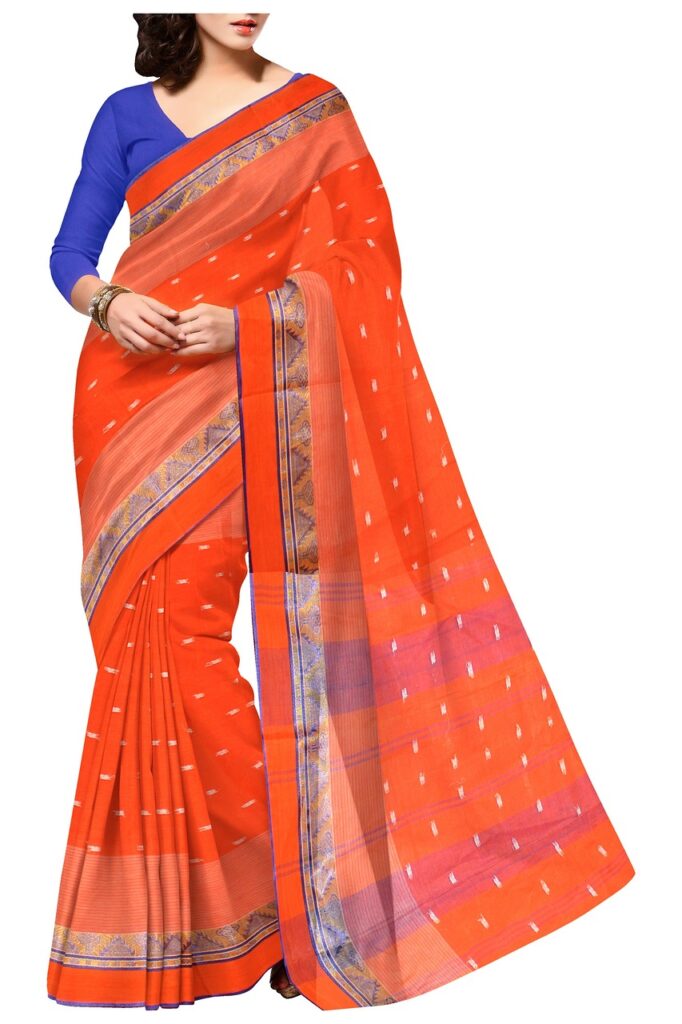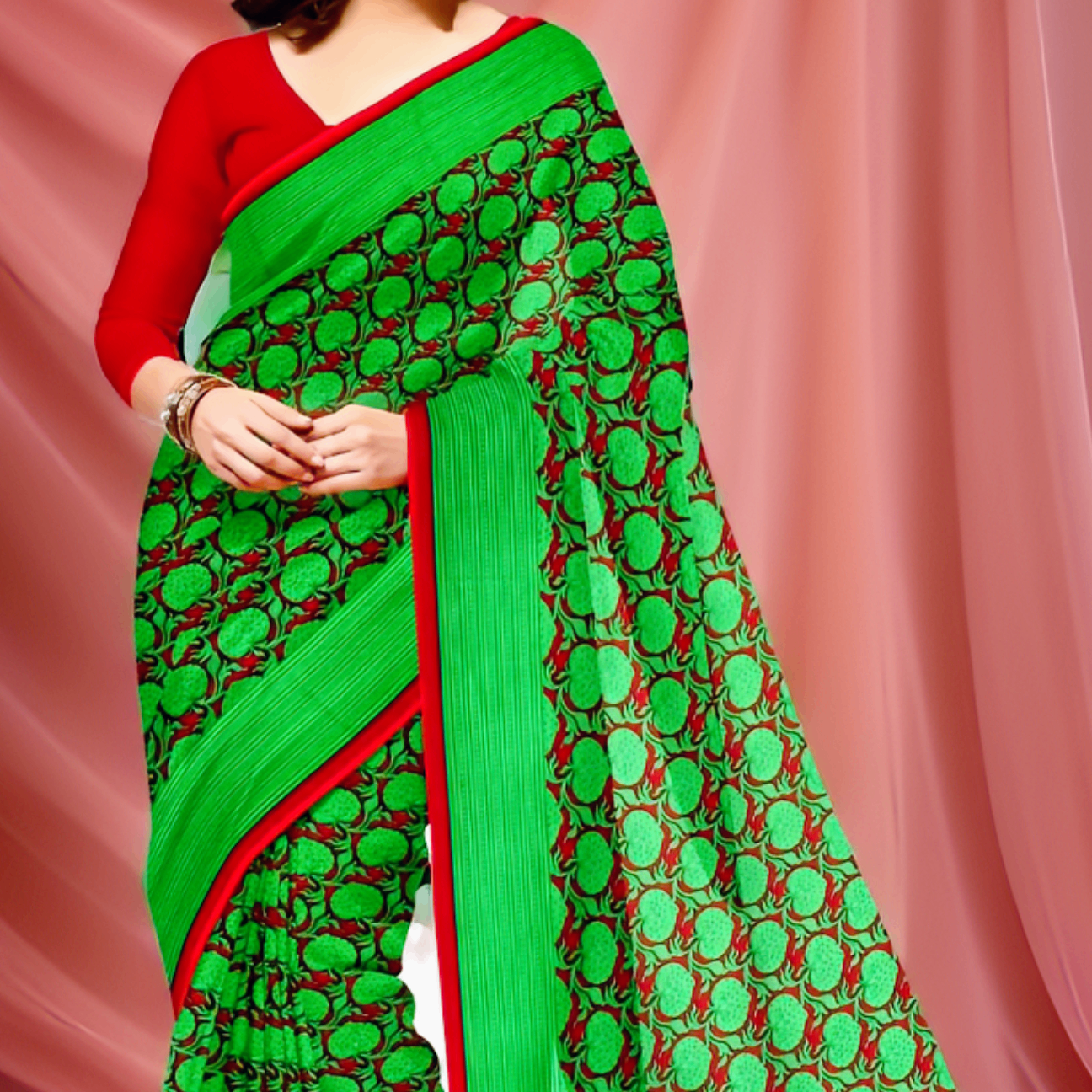1. Introduction
Do you want to know Jamdani saree price in Bangladesh. In the modern tapestry of Bangladesh’s cultural heritage, the Jamdani saree holds a special place. This article will delve into the intricate world of Jamdani sarees, exploring their history, weaving techniques, pricing factors, and much more.
2. History of Jamdani Saree
Jamdani sarees boast a rich history dating back to the Mughal era. Originating in Dhaka, these handwoven wonders were once reserved for royalty. The historical journey of Jamdani reflects the exquisite craftsmanship embedded in each thread.
3. The Art of Jamdani Weaving
Unraveling the mystery behind Jamdani saree production, this section will explore the meticulous weaving process. From selecting fine cotton threads to the skilled hands behind the loom, readers will gain insight into the artistry that brings these sarees to life.

4. Factors Influencing jamdani saree price in Bangladesh
The price of Jamdani sarees in Bangladesh is intricately woven with several factors, each contributing to the unique valuation of these handcrafted marvels. The foremost factor is the quality of materials, where the type and grade of threads used significantly influence the final cost. The intricacy of designs plays a crucial role, with more elaborate patterns demanding a higher price due to the skilled craftsmanship involved.
The time invested in weaving, particularly for complex motifs, contributes to the overall pricing. Additionally, the type of Jamdani variety also influences costs, with certain types being more labor-intensive or utilizing rarer materials. Understanding these factors provides enthusiasts with insights into the artistry and dedication encapsulated in each Jamdani saree, allowing for a more informed appreciation of their value.
5. Traditional Vs. Contemporary Designs
Jamdani sarees, renowned for their exquisite craftsmanship, present a captivating interplay between traditional and contemporary designs. Traditional patterns, rooted in historical motifs, showcase timeless elegance, often featuring intricate floral and geometric details. These classic designs resonate with cultural heritage, embodying the essence of Bangladesh’s weaving traditions.
On the other hand, contemporary designs breathe new life into Jamdani sarees, offering a fusion of innovation and tradition. Modern patterns and experimental motifs attract a broader audience, providing a fresh take on this ancient art form. The marriage of traditional weaving techniques with contemporary aesthetics adds versatility to Jamdani sarees, making them not just cultural artifacts but also stylish statements that cater to diverse tastes and preferences. The juxtaposition of traditional versus contemporary designs showcases the enduring appeal and adaptability of Jamdani sarees in the ever-evolving world of fashion.
6. Popular Jamdani Saree Varieties
Jamdani sarees, an epitome of timeless elegance, offer a fascinating array of varieties in Bangladesh. Dhakai Jamdani, originating from Dhaka, showcases intricate floral and geometric motifs, exuding classic sophistication. Shantipur Jamdani, renowned for vibrant hues and nature-inspired designs, strikes a perfect balance between tradition and modernity. Tangail Jamdani, with its bold colors and geometric patterns, becomes a dynamic choice for festive occasions, while Narayanganj Jamdani, with its lightweight grace, serves as an ideal everyday wear option. Dhonekhali Jamdani stands out for its affordability and minimalistic patterns, ensuring accessibility without compromising quality.
The luxurious Jamdani silk sarees blend silk’s opulence with traditional patterns, reserved for special events. Butidar Jamdani, featuring densely woven floral motifs, makes a striking statement at celebrations, while Muslin Jamdani, with its fine fabric and delicate motifs, harmoniously blends tradition with comfort. Jangal Jamdani draws inspiration from nature, offering a whimsical touch, and Baluchari Jamdani, a fusion of traditional weaving and storytelling, intricately depicts mythological scenes. Each variety narrates a unique story, making Jamdani sarees not just garments but cherished pieces of art, symbolizing the rich cultural heritage of Bangladesh.
Ensuring the authenticity of a Jamdani saree is crucial. Readers will discover trusted sources and marketplaces where they can purchase genuine Jamdani sarees, avoiding counterfeit products.
8. Jamdani Saree Price Range
Jamdani sarees, steeped in tradition and craftsmanship, present a diverse price range, catering to varied budgets. The pricing dynamics are influenced by factors like material quality, intricacy of designs, and the time-intensive weaving process. Dhakai Jamdani, renowned for its fine texture and elaborate motifs, may command a higher price, while varieties like Dhonekhali Jamdani offer an affordable yet quality option.
The opulent Jamdani silk sarees, blending silk with traditional patterns, typically fall on the higher end of the price spectrum. Understanding the price range ensures that enthusiasts can embrace the allure of Jamdani sarees while making choices that align with their preferences and budget constraints.
11. Jamdani Sarees: Beyond Fashion and price
Jamdani sarees transcend mere fashion and pricing, embodying a cultural legacy in Bangladesh. Beyond their aesthetic allure and intricate craftsmanship, these handwoven marvels hold profound cultural significance. Worn at weddings, festivals, and cultural events, Jamdani sarees become symbols of tradition and heritage. Their global recognition extends beyond borders, capturing hearts worldwide.
Jamdani sarees are not just garments; they are storytellers, weaving tales of history, artistry, and cultural pride. While their pricing reflects craftsmanship and quality, the true value lies in preserving and honoring the rich heritage they carry, making them timeless treasures beyond the realms of fleeting fashion trends.
13. Global Recognition and Demand
Highlighting the global appeal of Jamdani sarees, this section explores how they have gained recognition on the international stage. The rising demand signifies their universal allure.

14. Sustainability in Jamdani Weaving depends on pricing
Sustainability in Jamdani weaving intertwines with pricing, reflecting an eco-conscious approach. The ethical and eco-friendly practices employed in crafting Jamdani sarees contribute to their sustainable appeal. By supporting local artisans, using natural fibers, and adopting environmentally friendly dyeing processes, Jamdani weaving aligns with conscious consumerism. The pricing structure often reflects the dedication to sustainable practices, making Jamdani sarees not just a fashion statement but also a choice for those who value eco-chic elegance. The commitment to sustainability in Jamdani weaving ensures a greener and more responsible future in the realm of fashion.
15. Conclusion
As we conclude our journey through the world of Jamdani sarees, it’s evident that these handwoven products are more than just pieces of clothing. They are a testament to centuries-old craftsmanship, cultural pride, and timeless elegance.
FAQs:
- Q: Are Jamdani sarees only popular in Bangladesh?
A: While they originated in Bangladesh, Jamdani sarees have gained international acclaim and are cherished by fashion enthusiasts worldwide. - Q: What makes Jamdani sarees sustainable?
A: Jamdani sarees promote sustainability through the use of natural fibers, eco-friendly dyeing processes, and support for local artisan communities. - Q: Can I find affordable Jamdani sarees?
A: Yes, Jamdani sarees come in a range of prices, and there are affordable options available without compromising on quality. - Q: How often should I get my Jamdani saree dry-cleaned?
A: It’s recommended to dry-clean Jamdani sarees occasionally, especially after special occasions or heavy use. Otherwise, gentle handwashing is suitable. - Q: Are contemporary Jamdani designs as popular as traditional ones?
A: Yes, contemporary Jamdani designs have gained popularity, offering a fresh take on this traditional attire.